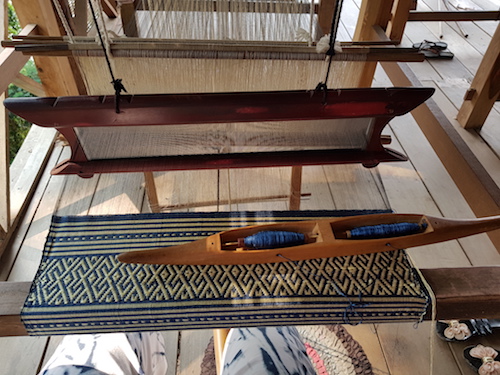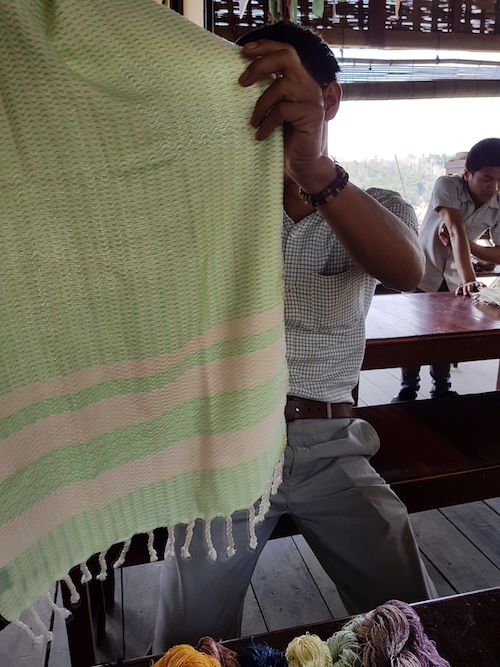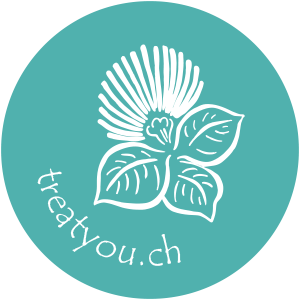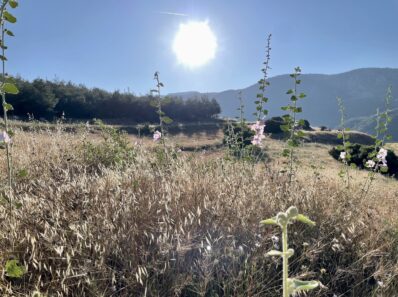AN ANCIENT TRADITION
During my trip to Laos I had the good fortune to come into contact with Laotian weavers and their ancient weaving tradition. Here in Laos women dominate the weaving arts and in fact men don’t practice this art. The traditional knowledge is passed down three generations from grandmother and mother to daughter.

TODAY’S WEAVING TRADITION
Since 1998 there has been a Laotian craftsmen's association, which is firmly committed maintaining its old tradition and its excellent reputation. The tendency towards natural textile use and the hand woven traditions is encouraged and promoted. The art of Laotian weaving and its textiles are presently world famous due to a refined artisanal craftsmanship and the use of natural dye coloring.


The “Ock Pop Tok” centre pictured above has projects in remote villages to create economic opportunities for the women there. The women are encouraged to expand their artisanal knowledge and to creatively evolve their traditions and ideas.
WEAVING PATTERNS BY REGIONS
Laos is comprised of 55 different ethnic groups, which each have their own characteristic weaving patterns and techniques. Additionally woven motifs and patterns vary between each village.
In earlier times, when communication within the country was not as developed, it was possible to associate a textile design to exactly one region. Due to ethnic migrations and resettlements these regional textile trademarks are not as defined in modern Laos anymore.
Textiles are made with locally grown cotton, hemp and silk.
Laotian weavers often portray their ways of life, myths and legends into their textiles. As such Women often weave and work on a garment for a special occasion long in advance before the actual event.
Each year the different villages hold a competition and award a prize for the most beautiful woven pattern.
I couldn’t help but being impressed by all the beautiful woven fabrics in their complexities and intricacies.


IN THE VILLAGES
Around the cultural capital, Luang Prabang there are many villages renowned for their weaving artistry.
I had the privilege to visit one village and receive a personal viewing of the weaving mill, the people and their looms and their weaving utensils.
The village houses are generally built out of bamboo and stand on stilts. The lower, open-air part of the house, which is under the stilts, is where the work is done. For example, pictured here, she weaves and works here and sleeps and lives in the covered, enclosed area above.
MY WEAVING WORKSHOP
I was excited to attend a workshop in the “Ock Pop Tok” handicraft centre and to experience their art of weaving in my own way.
The center employs full-time weavers ,who design and create wonderful fabrics. Some of the weavers like my supervisor Mrs. Jone run and teach workshops here at the centre. Without her profound knowledge I would have never completed my little piece of fabric that I wove, pictured here. From spooling the bobbin to operating the loom was such a fun experience and definitely gave a deeper appreciation and understanding for all hand woven textiles.


THE LAOTIAN LOOM
The fabric’s pattern is preset through the vertically clamped threads mounted on the rear part of the loom, pictured here.
With each pass of the loom, a horizontally clamped thread is moved from bottom to top to weave the pattern into a completed fabric.
If I compare these Laotian looms to Turkish looms, Laotian looms are operated with a bamboo pedal with the shuttle being pushed back and forth by hand and the vertically mounted pattern can be transported independently between looms. The Turkish hand looms are operated via a hand pulled lever which shoots the shuttle back and forth and the patterns cannot be transferred between their looms.
I was very pleased to see that the tradition of weaving in Laos is so firmly established and honored and that they actively keep the tradition moving forward and evolving. For instance, in Luang Prabang, I discovered a few shops that are committed to fair trade in that the fabrics have a declaration of origin and its maker, who is credited by name.
TREAT YOU’S PESTEMAL IN LAOS
I so loved to observe the reaction of the employees at the “Ock Pop Tok” center when they literally marvelled at the beauty of my Turkish pestemal that I had with me. Soooo sweet….




